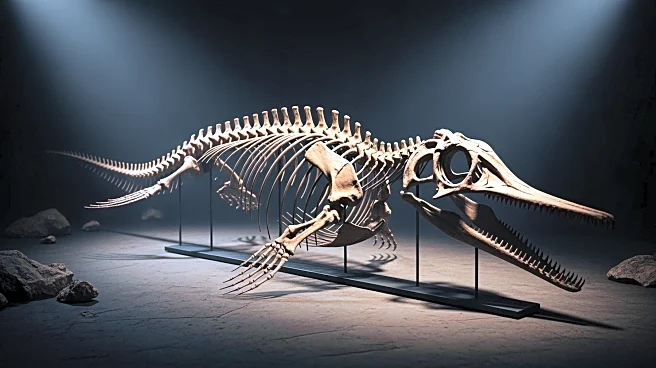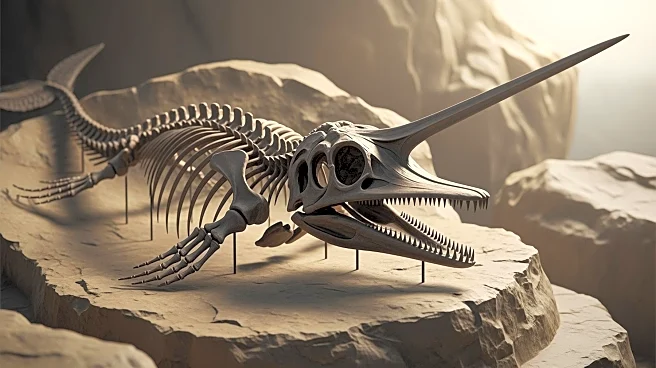What's Happening?
Paleontologists have resolved a long-standing mystery surrounding a 'sword dragon' skeleton discovered on the UK's Jurassic Coast. The skeleton, found near Dorset's Gold Cap in 2001, has been identified
as a new species of ichthyosaur, named Xiphodracon goldencapensis. This ancient marine reptile, which lived during the Pliensbachian period approximately 193 to 184 million years ago, was an air-breathing creature that dominated the ancient oceans alongside dinosaurs. The discovery was announced in a press release from the University of Manchester, highlighting the skeleton's exceptional preservation and its significance in filling gaps in the ichthyosaur evolutionary record.
Why It's Important?
The identification of Xiphodracon goldencapensis is significant for paleontology, as it provides insights into the evolutionary history of ichthyosaurs, which were pivotal marine reptiles during the time of dinosaurs. This discovery helps scientists understand the faunal turnover during the Pliensbachian period, a time marked by the extinction of several ichthyosaur families and the emergence of new ones. The well-preserved skeleton offers a rare glimpse into the anatomy and diet of these ancient creatures, potentially revealing traces of its last meal. This finding enriches the fossil record and aids in understanding the biodiversity and ecological dynamics of prehistoric marine environments.
What's Next?
The discovery of Xiphodracon goldencapensis may lead to further research into the Pliensbachian period, focusing on the evolutionary transitions of marine reptiles. Scientists might explore other fossil sites for similar specimens to gain a broader understanding of ichthyosaur diversity and adaptation strategies. The University of Manchester and collaborating institutions could conduct detailed studies on the skeleton's anatomy and preserved features to reconstruct the life and environment of this species. This could also prompt a reevaluation of existing ichthyosaur fossils to identify potential new species or subspecies.
Beyond the Headlines
The discovery of Xiphodracon goldencapensis highlights the importance of paleontological research in understanding Earth's historical biodiversity and evolutionary processes. It underscores the role of well-preserved fossils in bridging gaps in scientific knowledge and the potential for new discoveries to reshape our understanding of ancient life. This finding may inspire educational initiatives and public interest in paleontology, emphasizing the value of preserving fossil sites and supporting scientific exploration.











